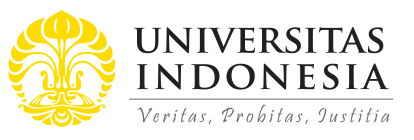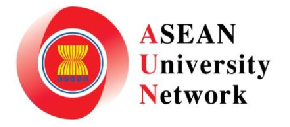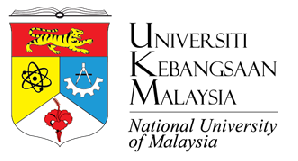
Abstract
The term alternative media refers to media that serves as alternative sources of information in lieu of mainstream media. In contrast to social media, alternative media are mass media entities that carry out journalistic functions even though they are affiliated with community organizations. Thus, alternative media are expected to provide authentic news just like mainstream media in Muslim countries. Islamic alternative media are also required to produce quality news, and this was especially seen during the COVID-19 pandemic, when a flood of information resulted in confusion among the community. In response, training that aimed to enhance journalistic professionalism for practitioners of Islamic alternative journalism from four alternative media entities was conducted during the pandemic. Entitled Enhancing Professionalism of Muslim Journalists, the training was carried out in a measurable manner using the Assets-Based Community Development (ABCD) approach, which consists of five steps, namely discovery, dream, design, define, and destiny. With these five steps, the training resulted in significant changes in how journalist carried out their jobs. These include improvements in their understanding of professional ethics, news writing, and the use of journalistic language. This training also provided an overview of the pattern of reporting in Islamic alternative media, which are platforms that can provide news from a religious perspective.
References
Aeni, N. (2021). Pandemi COVID-19: Dampak kesehatan, ekonomi, & sosial. Jurnal Litbang: Media Informasi Penelitian, Pengembangan Dan IPTEK, 17(1), 17–34. https://doi.org/https://doi.org/10.33658/jl.v17i1.249
Aldridge, M., & Evetts, J. (2003). Rethinking the concept of professionalism: The case of journalism. British Journal of Sociology, 54(4), 547–564. https://doi.org/10.1111/j.1468-4446.2003.00547.x
Allen, M. (2017). The SAGE Encyclopedia of Communication Research Methods. SAGE Publications.
Ambardi, K. (2019). Trust: Kasus reklamasi teluk Jakarta. In K. Ambardi, N. Kurnia, Rahayu, Z. M. Z. (Eds.), Jurnalisme, “Berita palsu”, & disinformasi (pp. 8-11). UNESCO Office.
Apuke, O. D. (2017). Quantitative research methods: A synopsis approach. Kuwait Chapter of Arabian Journal of Business and Management Review, 6(11), 40–47. https://doi.org/10.12816/0040336
Arianto, A. K. (2021). Dugaan hoaks seputar vaksin Covid 19 di Indonesia dalam kerangka linguistik forensik. KoPen: Konferensi Pendidikan Nasional, 3(1), 115–129.
Catalan-Matamoros, D. & Elía, C. (2020). Vaccine hesitancy in the age of coronavirus and fakenews: Analysis of journalistic sources in the Spanish quality press. Int J Environ Res Public Health, 17(21), 8136. https://doi.org/10.3390/ijerph17218136
Bhusal, T. (2020). Citizen participation in times of crisis: Understanding participatory budget during the COVID-19 pandemic in Nepal. Asean Journal of Community Engagement, 4(2), 321-341. https://doi.org/10.7454/ajce.v4i2.1103
de Lara, A., & García-Avilés, J. A. (2013). Examining competences in online journalism at Spanish universities: The case of the Miguel Hernández University. Journal of Applied Journalism & Media Studies, 2(2), 245–263. https://doi.org/10.1386/ajms.2.2.245_1
Dihni, V.A. (2021, September 17). Kemenkominfo turunkan 4616 konten hoaks Covid-19 terbanyak di Facebook. Databoks. https://databoks.katadata.co.id/datapublish/2021/09/17/kemenkominfo-turunkan-4616-konten-hoaks-covid-19-Terbanyak-di-facebook
Fegert, J. M., Plener, P. L., & Clemens, V. (2020). Challenges and burden of the Coronavirus 2019 (COVID-19) pandemic for child and adolescent mental health: A narrative review to highlight clinical and research needs in the acute phase and the long return to normality. Child and Adolescent Psychiatry and Mental Health, 14(1), 1–11. https://doi.org/10.1186/s13034-020-00329-3
Firmansyah, & Asgha, A. Y. (2020). Journalist’s information organizational patterns in reporting Indonesian vice president’s agenda. Jurnal ASPIKOM, 5(2), 307–321. http://dx.doi.org/10.24329/aspikom.v5i2.691.
Franklin, B., Hames, J., Hanna, M., & Kinsey, M. (2005). Key concept in journalism studies. SAGE.
Githinji, M. K., & Ndayikunda, Y. (2019). Media training and journalism competence in Kenya: Perspectives from standard group media senior managers. Journal of Humanities & Social Studies, 7(5), 11–17. https://doi.org/10.24940/theijhss/2019/v7/i5/hs1905-007
Grimes, D. R. (2021). Medical disinformation and the unviable nature of COVID-19 conspiracy theories. PLoS ONE, 16(3), 1–17. https://doi.org/10.1371/journal.pone.0245900
Harrison, R., Blickem, C., Lamb, J., Kirk, S., & Vassilev, I. (2019). Asset-based community development: Narratives, practice, and conditions of possibility - a qualitative study with community practicioner. SAGE Open, 9(1). https://doi.org/10.1177/2158244018823081
Iyer, P. (2015). Competencies for future newsrooms in Australia : a mid-career learning strategy for journalists. (Publication No.4521) [Doctoral dissertation, University of Wollongong]. https://ro.uow.edu.au/theses/4521
Kominfo. (2021, September 22). Penanganan sebaran konten hoaks vaksin Covid-19. https://www.kominfo.go.id/content/detail/37095/penanganan-sebaran-konten-hoaks-vaksin-covid-19-rabu-22092021/0/infografis
Krisdinanto, N. (2017). Anomali dan teori hirarki pengaruh terhadap isi media. Komunikatif: Jurnal Ilmiah Komunikasi, 3(1), 1–18. https://doi.org/10.33508/jk.v3i1.1243
Kurnia, S. S., Ahmadi, D., & Firmansyah, F. (2020). Investigative news of online media. MIMBAR : Jurnal Sosial Dan Pembangunan, 36(1), 1–11. https://doi.org/10.29313/mimbar.v36i1.4286
Kurniasih, E. P. (2020). Dampak pandemi Covid 19 terhadap penurunan kesejahteraan masyarakat Kota Pontianak. Prosiding Seminar Akademik Tahunan Ilmu Ekonomi Dan Studi Pembangunan, 277–289. Universitas Tanjungpura. https://feb.untan.ac.id/wp-content/uploads/2020/12/Erni-1.pdf
Leavy, P. (2017). Research design: Quantitative, qualitative, mixed methods, art based, and community based participatory research approach. Guilfold Press.
Masrudi. (2019). Hoax, media baru dan daya literasi kita. Orasi, 10(2), 152–161. http://dx.doi.org/10.24235/orasi.v10i2.4578.g2661
Melki, J., Tamim, H., Makki, M., Amine, J., El, & Hitti, E. (2021). Mitigating infodemics: The relationship between news exposure and trust and belief in Covid-19 fake news and social media spreading. PLoS ONE, 16(6), 1–13. https://doi.org/10.1371/journal.pone.0252830
Örnebring, H., & Mellado, C. (2016). Valued skills among journalists: An exploratory comparison of six European nations. Journalism, 19(4), 1–19. https://doi.org/10.1177/1464884916657514
Perreault, M. F., & Perreault, G. P. (2021). Journalists on COVID-19 journalism: Communication ecology of pandemic reporting. American Behavioral Scientist, 65(7), 976–991. https://doi.org/https://doi.org/10.1177/0002764221992813
Prajarto, Y. N. (2021). Fact-checking practice regarding information of Covid-19 pandemic on Tempo.co, Tirto.id, and Kompas.com. Jurnal Penelitian Komunikasi Dan Opini Publik, 25(1), 1-14. https://doi.org/10.33299/jpkop.25.1.3461
Priastuty, C. W., Rahmanto, A. N., Maret, U. S., & Surakarta, K. (2020). Hoaks tentang vaksin Covid-19 di tengah media sosial. Prosiding Seminar Nasional Unimu, 3, 391– 399. Universitas Muhammadiyah Semarang. https://prosiding.unimus.ac.id/index.php/semnas/article/view/641/646
Putri, I. (2021, April 8). Berita hoax dinilai buat Indonesia sulit atasi pandemi Covid-19. Detiknews.
Rachman, F. R., & Pramana, S. (2020). Analisis sentimen pro dan kontra masyarakat Indonesia tentang vaksin COVID-19 pada media sosial Twitter. Indonesian of Health Information Management Journal, 8(2), 100–109. https://doi.org/10.47007/inohim.v8i2.223
Rahayu, R. N., & Sensusiyati. (2021). Vaksin Covid 19 di Indonesia: Analisis berita hoax. Intelektiva : Jurnal Ekonomi, Sosial & Humaniora Vaksin, 2(07), 39–49.
Ravelo, J. L. (2021, Agustus 05). Hoaks membunuh ayahku: Menyingkap pandemi lain di Indonesia. UNICEF Indonesia. https://www.unicef.org/indonesia/id/coronavirus/cerita/hoaks-membunuh-ayahku-menyingkap-pandemi-lain-di-indonesia
Reese, S. D. (2019). Hierarchy of influence. In T.P. Vos, F. Hanusch, D. Dimitrakopoulou, M. Geertsema-Sligh, & A. Sehl (Eds.), The international encyclopedia of journalism studies, (pp. 1–5). Wiley.
Suhermono, M., & Pareno, S. A. (2017). Analisis uji kompetensi wartawan PWI Jawa Timur untuk meningkatkan profesionalitas. Jurnal Kajian Media, 1(2), 132–156. https://doi.org/10.25139/jkm.v1i2.461
Susilo, D., Putranto, T. D., & Navarro, C. J. S. (2021). Performance of Indonesian Ministry of Health in overcoming hoax about vaccination amid the COVID-19 pandemic on social media. Nyimak Journal of Communication, 5(1), 151-166. http://dx.doi.org/10.31000/nyimak.v5i1.4100
Then, K. L., Rankin, J. A., & Ali, E. (2014). Focus group research: What is it and how can it be used? Canadian Journal of Cardiovascular Nursing, 24(1), 16–22.
Umam, K. (2021). Group chat analysis of hoax detection during the Covid-19 pandemic using the K-Nearest neighbors algorithm and massive text processing. Journal of Physics: Conference Series, 1918(4), 0–6. https://doi.org/10.1088/1742-6596/1918/4/042149
van der Linden, S., Roozenbeek, J., & Compton, J. (2020). Inoculating against fake news about COVID-19. Frontiers in Psychology, 11, 1–7. https://doi.org/10.3389/fpsyg.2020.566790
Vos, T., & Heinderyckx, E. (2017). Gatekeeping in Transition. Routledge.
Waluyo, D. (2018). Tinjauan standar kompetensi wartawan untuk meningkatkan kapasitas media dan profesionalisme. Jurnal Studi Komunikasi dan Media, 22(2), 167–184. http://dx.doi.org/10.31445/jskm.2018.220206
Wantiknas. (2020, April 17). Kolaborasi multistakeholders: Strategi pencegahan hoax saat pandemi. http://www.wantiknas.go.id/id/berita/kolaborasi-multistakeholders-strategi-pencegahan-hoax-saat-pandemi
Widarini, D. A., Saifulla, H. M., Nilamsari, N., Andriani, F., & Wiyati, E. K. (2019). Kepercayaan publik terhadap media pers arus utama. Dewan Pers. https://dewanpers.or.id/assets/documents/laporan/Laporan_Final_Riset_Pers_dr_Univ_Moestopo.pdf
Woda, B. E., Birowo, M. A., Vidiadari, I. S., & Nuswantoro, R. (2021). Pandemic journalism: A study of Covid-19 news coverage on detik.com. Jurnal ASPIKOM, 6(2), 235-249. https://doi.org/10.24329/aspikom.v6i2.906
Yustitia, S., & Ashrianto, P. D. (2020). An analysis on COVID-19 disinformation triangle in Indonesia. Komunikator, 12(2), 116-128. https://doi.org/10.18196/jkm.122040
Zaenudin, A. (2018, February 15). Kompetisi di antara berbagai situs web Islam. Tirto. Id. https://tirto.id/kompetisi-di-antara-berbagai-situsweb-islam-cEHi
Recommended Citation
Satriani, Arba'iyah; Permatasari, Andalusia Neneng; and Firmansyah, Firmansyah
(2022).
Enhancing the Professionalism of Muslim Journalists in Handling Disinformation and Hoaxes During the COVID-19 Pandemic.
ASEAN Journal of Community Engagement, 6(2), 244-261.
Available at: https://doi.org/10.7454/ajce.v6i2.1168








